Coffee Basics
Coffee Creamers – Your Dream Coffee
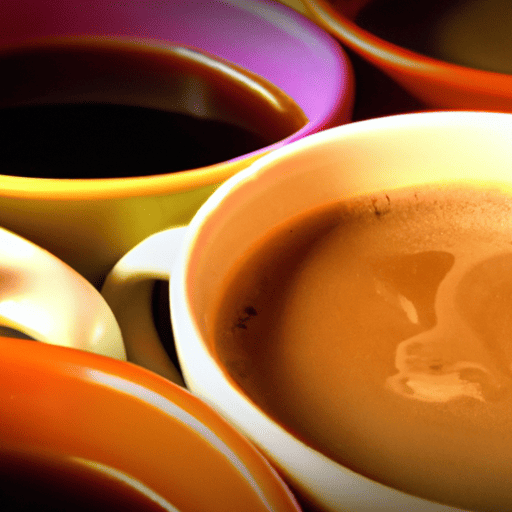
I have always been a coffee enthusiast, but my passion for coffee truly deepened when I explored the realm of coffee creamers. With a variety of flavors ranging from traditional options like vanilla and hazelnut to more adventurous ones like pumpkin spice and caramel macchiato, there is a creamer to satisfy every palate.
In this article, we will explore the different types of coffee creamers available on the market today, including popular flavors and brands. We will also discuss how to choose the right creamer for your taste preferences and how to use them properly in your daily cup of joe.
Whether you are a seasoned coffee drinker or just starting out, join me as we dive into the wonderful world of coffee creamers and discover how they can turn your morning cup of coffee into a dreamy experience.
Key Takeaways
- Choosing the right coffee creamer is all about personal taste preferences and experimentation, with options ranging from classic to adventurous flavors and dairy-free to traditional dairy-based types.
- Nutritional content, potential allergens or dietary restrictions, and the presence of artificial sweeteners and additives should be considered when selecting a coffee creamer, with lower calorie and non-dairy options being a healthier choice.
- Celebrity endorsements can significantly increase a product’s visibility and credibility, but consumers should still do their own research before blindly following endorsements.
- Experimenting with different flavors, ingredients, and storage methods can lead to discovering a new favorite way to enjoy coffee, with options ranging from DIY creamer recipes to using creamers creatively in other beverages and dishes.
The Different Types of Coffee Creamers Available
There’s a plethora of coffee creamers available, each with their own unique flavor profiles and textures. As someone who loves a good cup of coffee, I’m always on the lookout for new and exciting creamer options to enhance my morning brew.
One trend that’s been gaining popularity in recent years is dairy-free options. From almond milk to coconut cream, there are now plenty of non-dairy alternatives that can add richness and depth to your cup without any lactose.
Of course, traditional dairy-based creamers still have their place in the market as well. Whether you prefer half-and-half or heavy cream, there are plenty of delicious options out there that can complement different coffee blends and roasts.
But what really excites me about coffee creamers is the opportunity for unique flavor combinations. You can find everything from classic vanilla or hazelnut to more adventurous flavors like pumpkin spice or caramel macchiato.
When it comes to popular flavors and brands, everyone has their own favorites. Some people swear by International Delight’s French Vanilla or Nestle’s Coffee-Mate Hazelnut, while others prefer organic options like Califia Farms Almond Milk Creamer.
Personally, I love trying out new brands and flavors whenever I get the chance – after all, you never know when you’ll stumble upon your new dream coffee combination!
Popular Flavors and Brands
Indulge in the most popular flavors and beloved brands of coffee creamers available to elevate your morning beverage experience. Coffee creamers come in a wide variety of flavors, from classic vanilla to unique combinations like pumpkin spice latte. Top selling brands include International Delight, Nestle Coffee-Mate, and Silk. These brands offer a range of options including dairy-free, sugar-free, and organic.
Take a look at the table below for some inspiration:
| Brand | Flavors |
|---|---|
| International Delight | French Vanilla, Hazelnut |
| Nestle Coffee-Mate | Caramel Macchiato, Coconut |
| Silk | Almond Creamer, Vanilla |
International Delight is known for their rich and creamy flavors that perfectly complement any cup of coffee. Their French Vanilla and Hazelnut are two of the top selling flavors. Nestle Coffee-Mate offers unique flavor combinations like Caramel Macchiato and Coconut that add a twist to your standard cup of joe. Silk provides dairy-free options like their Almond Creamer while still delivering on taste with their Vanilla flavor.
Now that you have an idea of some popular flavors and brands, it’s time to figure out which one is right for you. The next section will guide you on how to choose the perfect coffee creamer based on your taste preferences without compromising on quality or health benefits.
How to Choose the Right Creamer for Your Taste
Finding the perfect creamer for you is all about understanding your taste preferences and exploring different options to discover what works best, like trying on different shoes until you find the perfect fit.
When it comes to coffee creamers, flavor preferences play a huge role in determining which one is right for you. Do you prefer something sweet, savory, or spicy? Perhaps you enjoy creamy flavors like hazelnut or vanilla, or maybe bold and rich flavors like chocolate or caramel are more your style.
Knowing your flavor profile will help narrow down your choices and guide you towards the perfect creamer.
Personalizing options also come into play when choosing a coffee creamer. Some people prefer their coffee black with just a splash of dairy-free milk, while others opt for a sweeter taste by adding flavored syrups or whipped cream.
For those who want something in between, there are plenty of non-dairy creamers available that offer richness without overpowering the coffee’s natural flavors. Experimenting with various combinations can be fun and exciting, so don’t be afraid to mix and match until you find what works best for your palate.
Finding the right coffee creamer is all about understanding your personal preferences and experimenting with different options until you discover what makes your dream cup of joe. Whether it’s a rich chocolatey flavor or a simple splash of almond milk, there are endless possibilities when it comes to customizing your coffee experience.
In the next section, we’ll explore how to use these delicious add-ins to elevate our morning routine without breaking the bank.
How to Use Coffee Creamers
To elevate your morning routine without spending a lot of money, try using different flavors and combinations of creamers in your coffee. There are many coffee creamer alternatives available on the market today, ranging from classic vanilla to seasonal pumpkin spice. Don’t be afraid to get creative with them!
Here is a table of some unique and delicious ways to use coffee creamers:
| Creamer Flavor | Creative Use |
|---|---|
| Hazelnut | Add a splash to hot chocolate for a nutty twist |
| Cinnamon Roll | Mix with milk and pour over oatmeal for a cozy breakfast |
| Irish Cream | Stir into pancake batter for an indulgent treat |
| Salted Caramel | Drizzle over ice cream or fruit for an easy dessert |
These ideas are just the beginning – there are countless creative uses for coffee creamers that can add flavor and excitement to your day. And if you’re feeling ambitious, why not try making your own DIY coffee creamer? More on that in the next section about homemade recipes.
DIY Coffee Creamer Recipes
You can easily make your own delicious creamer at home with these simple DIY recipes! Here are three flavor combinations that will surely tickle your taste buds: vanilla bean, cinnamon sugar, and hazelnut.
To make the vanilla bean creamer, simply mix 1 cup of heavy cream or half-and-half with 1 tsp of vanilla extract and 2 tbsp of maple syrup. For a cinnamon sugar kick, mix 1 cup of milk with 2 tbsp of brown sugar and 1 tsp of ground cinnamon. And for a nutty flavor, combine 1 cup of heavy cream or half-and-half with ½ cup of hazelnut spread.
When making your own coffee creamer, it’s important to keep in mind some storage tips to ensure freshness. Store your homemade creamer in an airtight container in the fridge for up to one week. Keep in mind that homemade creamers may not last as long as store-bought ones due to their lack of preservatives. Be sure to give it a good shake before using as separation may occur over time.
Making your own coffee creamer allows you to control what goes into it and create unique flavors that suit your preferences. Plus, it’s fun and easy!
In the next section about health benefits and concerns, we’ll explore how making your own coffee creamer can also have health benefits beyond just being tasty.
Health Benefits and Concerns
As I consider the health benefits and concerns associated with coffee creamers, three key points come to mind:
- Understanding the nutritional content of your creamer can help you make informed decisions about your diet.
- It’s important to be aware of any potential allergens or dietary restrictions that could impact your enjoyment of a particular creamer.
- Many people are wary of artificial sweeteners and other additives that may be lurking in their favorite coffee creamers. Addressing these concerns is crucial for those seeking a healthier lifestyle.
Make sure to double space between each point.
Nutritional Information
Hey, have you checked out the nutritional information on your favorite coffee creamers lately? It’s important to be aware of what we’re putting into our bodies. While some creamers may taste delicious, they could also have negative impacts on our health.
Let’s take a look at some common coffee creamers and their nutritional information in the table below:
| Coffee Creamer | Serving Size (tbsp) | Calories | Total Fat (g) | Sugar (g) |
|---|---|---|---|---|
| Hazelnut Creamer | 1 tbsp | 35 | 2.5 | 5 |
| French Vanilla Creamer | 1 tbsp | 35 | 2.5 | 5 |
| Non-Dairy Creamer (powdered) | 1 tbsp (dry) or 2 tsp (prepared) | 10-20 | .5-.75 | .5-1 |
| Half-and-Half Creamer |
It’s clear that some coffee creamers can be high in calories, fat, and sugar. This can lead to weight gain and other health issues if consumed in excess. As someone who wants to enjoy my morning cup of coffee without compromising my health goals, I make sure to choose creamers with lower calorie and sugar content or opt for non-dairy options like almond milk or coconut milk instead.
Now let’s move onto discussing allergies and dietary restrictions when it comes to coffee creamers.
Allergies and Dietary Restrictions
For those with dietary restrictions or allergies, it’s crucial to check the labels of creamers before adding them to your morning beverage. Many coffee creamers contain common allergens such as dairy, soy, and nuts. If you have an allergy or intolerance to any of these ingredients, you may need to look for food substitutes or alternative options.
Thankfully, there are many plant-based and non-dairy creamers available on the market today that cater to different dietary needs. Some popular alternatives include almond milk creamer, coconut milk creamer, oat milk creamer, and hemp milk creamer. These alternatives not only provide a delicious flavor but also offer numerous health benefits compared to traditional dairy-based options.
So if you have a food allergy or intolerance, don’t let it stop you from enjoying your dream cup of coffee – just be sure to read the label first!
As we move into the next section about artificial sweeteners and additives, it’s important to keep in mind that some people may also have allergies or intolerances towards certain sweeteners or preservatives often found in coffee creamers. It’s always best to do your research and find products that align with your specific dietary needs and preferences.
Artificial Sweeteners and Additives
Did you know that over 40% of Americans consume artificial sweeteners on a daily basis, many of which can be found in popular coffee creamers? While these additives may provide a sweeter taste and longer shelf life for the product, they also come with their own set of pros and cons.
For instance, some consumers prefer the taste of natural sweeteners like honey or agave over artificial ones due to concerns about potential health risks, such as headaches, digestive issues, and increased appetite. On the other hand, some people with dietary restrictions or weight loss goals may opt for low-calorie or sugar-free options.
The impact of these additives on health is still widely debated among experts in the field. Some studies suggest that consuming artificial sweeteners may lead to an increased risk of certain diseases like cancer and diabetes, while others argue that there isn’t enough evidence to support these claims.
Regardless of consumer preferences and market trends, it’s important for individuals to educate themselves on the ingredients in their coffee creamers and make informed decisions based on their own health needs and goals. With this knowledge in mind, let’s take a closer look at how coffee creamers have become a staple in popular culture today.
Coffee Creamers in Popular Culture
When it comes to coffee creamers, they’re not just a part of our daily routine but also a significant aspect of popular culture.
As someone who’s passionate about coffee, I’ve observed how the use of creamers has evolved with the rise of coffee shop culture and social media trends.
Moreover, celebrity endorsements have played a crucial role in boosting the popularity of certain types and brands of creamers.
Coffee Shop Culture
Walking into a cozy coffee shop, you can smell the aroma of freshly brewed coffee and hear the sound of baristas steaming milk. The ambiance of a coffee shop is what makes it so special. It’s a place where people can come together to chat, work or simply relax while enjoying their favorite cup of joe. However, there are some unwritten rules when it comes to coffee shop etiquette that visitors should follow.
To give you an idea, here’s a table that outlines some common do’s and don’ts in coffee shops:
| Do | Don’t |
|---|---|
| Use headphones for music or phone calls | Talk loudly on your phone |
| Clean up after yourself | Leave your trash on the table |
| Order promptly | Hog tables or seats |
| Respect others’ personal space | Take flash photography inside |
When everyone follows these simple guidelines, it creates an environment where everyone can enjoy their time in the café without any disruptions. Now let’s dive into how social media trends have impacted our love for coffee creamers.
Social Media Trends
With the rise of social media influencers and their impact on consumer behavior, it’s no surprise that even coffee creamer choices have become a trendy topic. Influencer marketing has proved to be an effective way for brands to reach new audiences and promote their products.
Many coffee creamer brands have caught onto this trend by partnering with popular Instagram influencers to create viral campaigns promoting their product. These campaigns often feature influencers sharing photos and videos of themselves enjoying their morning coffee with a particular brand of creamer. The content is then shared with thousands or even millions of followers, ultimately leading to increased sales for the brand.
It’s fascinating to see how something as simple as a coffee creamer can become such a hot topic on social media, thanks in large part to influencer marketing techniques.
Speaking of which, another trend that has been gaining popularity lately is celebrity endorsements…
Celebrity Endorsements
Celebrities have been teaming up with various brands to promote their products, creating a powerful visual representation of the effectiveness of celebrity endorsements. Coffee creamers are no exception to this trend, and it’s not surprising that we see many famous faces endorsing different coffee creamer brands. There are pros and cons to celebrity endorsements in coffee creamers, just like any other product.
On one hand, having a popular figure promoting your product can significantly increase its visibility and credibility. Consumers tend to trust celebrities they admire or follow on social media, so seeing them endorse a certain brand of coffee creamer can influence their buying decision. On the other hand, there is always the risk of backlash if something goes wrong with either the endorsement or the product itself. The celebrity’s reputation may be at stake if consumers find out that they endorsed a low-quality or unhealthy product.
As someone who enjoys experimenting with different coffee creamers, I find it fascinating how celebrities can impact our choices just by putting their name on something as simple as a coffee additive. However, I also believe that we should do our own research and not blindly follow what our favorite stars promote. Speaking of which, let me share some coffee creamer hacks and tips that I’ve learned over time!
Coffee Creamer Hacks and Tips
Adding a splash of flavored creamer to your morning coffee can elevate the taste and experience, with 63% of coffee drinkers using creamer regularly. But did you know that there are hacks and tips to make your coffee creamer even better?
Here are some ideas to try:
- Mix in a little bit of cinnamon or nutmeg for a warm, cozy flavor.
- Use coconut milk instead of traditional dairy creamer for a vegan option.
- Make your own DIY creamer alternatives by blending together almond milk, vanilla extract, and honey.
Don’t forget about storage – keeping your creamer fresh is key to ensuring the best taste possible. So, store your creamer in an airtight container in the fridge to keep it fresh for longer.
By experimenting with different flavors and ingredients, you can create your dream coffee every morning. So, go ahead and try out these hacks and tips. Who knows, you might just discover a new favorite way to enjoy your daily cup of joe!
Frequently Asked Questions
Are coffee creamers suitable for people with lactose intolerance?
As someone with lactose intolerance, I can confidently say that coffee creamers may not be suitable for me. However, there are options available that can help. Lactase supplements can be taken to help digest the lactose in dairy-based creamers. Alternatively, nut-based alternatives such as almond milk or coconut cream can be used as a creamy substitute.
It’s important to check the ingredients list and nutritional information of any coffee creamer before consuming it to ensure it is safe for those with lactose intolerance. While it may take some extra effort to find the right option, having a delicious cup of coffee without discomfort makes it all worth it.
Can coffee creamers be used as a substitute for milk in recipes?
I’ve found that coffee creamers can definitely be used as a substitute for milk in recipes. As someone who loves experimenting with different flavor options, I’ve tried using various coffee creamers in dishes like pancakes, French toast, and even mac and cheese.
The result is always a unique twist on the original recipe, with the added bonus of a delicious coffee flavor. Some recipe ideas I’ve tried include using hazelnut or vanilla flavored creamer in pancake batter, or adding caramel or mocha flavored creamer to a cheese sauce for mac and cheese.
Overall, I believe that incorporating coffee creamers into your cooking can add an unexpected and delightful element to your dishes.
How long do coffee creamers last once opened and stored in the refrigerator?
Opening a coffee creamer is like unwrapping a present. The anticipation of the flavors and added richness to my morning cup of joe always makes me excited.
However, once opened, it’s important to remember that these creamers have a shelf life. Generally, once opened and stored in the refrigerator, coffee creamers last for about two weeks.
It’s crucial to check the expiration date before use and always make sure they are tightly sealed and kept in optimal conditions. If you want to extend their shelf life, it’s recommended to store them in an airtight container in the fridge or freezer for up to six months.
With proper storage tips, you can enjoy your favorite coffee creamers without worrying about spoilage or waste.
Are there any vegan or non-dairy options for coffee creamers?
As someone who’s passionate about finding vegan options for my food and drinks, I can confidently say that there are plenty of non-dairy alternatives for coffee creamers.
In fact, nut milk alternatives like almond or coconut milk make for delicious and creamy additions to your morning cup of joe.
Many companies also offer specifically labeled vegan coffee creamers made from ingredients like soy or oat milk.
These options not only cater to those with dietary restrictions, but they also provide a healthier alternative to traditional dairy creamers.
So if you’re looking to switch up your coffee routine and try something new, don’t hesitate to give these vegan options a chance!
Can coffee creamers be added to tea or other hot beverages besides coffee?
Hot beverage alternatives for coffee creamers are abundant and vary in flavor options. Personally, I’ve found that adding a vanilla or hazelnut flavored coffee creamer to my hot chocolate adds a delicious twist to the traditional drink.
Additionally, tea drinkers can benefit from using coffee creamers as well. For example, a caramel or peppermint flavored creamer can elevate the taste of a simple cup of black tea.
The possibilities are endless when it comes to experimenting with different flavor combinations in non-coffee hot beverages.
Conclusion
In conclusion, coffee creamers are a game-changer for anyone who loves a good cup of coffee. With so many flavors and brands to choose from, it’s easy to find the perfect one to suit your taste buds.
From classic vanilla to exotic hazelnut or pumpkin spice, the possibilities are endless. Using coffee creamer is also incredibly easy – just pour in a splash and stir!
For those who prefer homemade options, DIY recipes allow you to customize your creamer exactly how you like it. While there may be some health concerns regarding the ingredients in certain creamers, there are also potential benefits such as increased energy and cognitive function.
Overall, incorporating coffee creamers into your daily routine can elevate your morning cup of joe from ordinary to extraordinary. As writer Maya Angelou once said, "The best part of waking up is Folgers in your cup."But I say the best part of waking up is having a delicious coffee with the perfect creamer that makes your soul sing.
Arf, an author and an innovative enthusiast of coffee, coffee alternatives, and tea, plays a crucial role as a contributor to the esteemed Cappuccino Oracle platform. Renowned for his curiosity and passion for these captivating beverages, Arf has carved out a unique space for himself in the world of exploration and writing. He realized that coffee, coffee alternatives, and tea are not mere drinks to keep one awake, but universes of flavors and stories waiting to be explored.
Arf’s articles for Cappuccino Oracle blend meticulous research with personal experiences, providing readers with an in-depth understanding of various types of coffee, coffee alternatives, and tea, along with their unique characteristics, cultures, and histories. His honest reviews and engaging narratives guide readers on their own journeys, helping them discover their preferences and find their perfect brew.
Coffee Basics
How Does a Coffee Maker Works

We are going to explore the exciting realm of coffee makers. Get ready to be amazed as we uncover the complex mechanisms of these incredible machines.
From the basic components and water heating mechanisms to the brewing process and the importance of filters, we will leave no stone unturned.
So grab a cup of joe and join us as we delve into the inner workings of how a coffee maker works.
Key Takeaways
- The coffee maker consists of basic components such as a water reservoir, heating element, filter basket, and carafe.
- The water is heated in the heating element to the desired temperature, and a temperature control mechanism maintains the desired temperature.
- The brewing process involves pre-infusion, extraction through hot water sprayed over coffee grounds, filtration, and temperature control for consistent flavor.
- The quality of filters and grind size play a crucial role in the taste and flavor of the brewed coffee.
Basic Components of a Coffee Maker
The basic components of a coffee maker include a water reservoir, a heating element, a filter basket, and a carafe. These components work together to ensure a smooth coffee-making process.

Coffee maker maintenance is crucial to keep these components in good working condition. Regular cleaning of the water reservoir prevents the buildup of mineral deposits, which can affect the taste of your coffee.
The heating element should be checked for any signs of damage or malfunction and replaced if necessary. Clogged filter baskets can lead to weak or bitter coffee, so it’s important to clean them regularly.
Troubleshooting common coffee maker problems involves checking for issues such as leaks, slow brewing, or uneven coffee extraction. By understanding and maintaining these basic components, you can ensure a consistently delicious cup of coffee.
Water Heating and Dispensing Mechanism
How does the coffee maker heat and dispense water?

The water heating and dispensing mechanism in a coffee maker involves a complex process that ensures the water is heated to the optimal temperature and distributed evenly for brewing.
When you pour water into the coffee maker’s reservoir, it’s drawn into the heating element through a tube using a water circulation system.
The heating element, usually a heating coil, heats the water to the desired temperature, typically between 195-205 degrees Fahrenheit.
The temperature control mechanism ensures that the water remains at the desired temperature throughout the brewing process.

Once the water reaches the desired temperature, it’s dispensed through a showerhead or spray nozzle evenly over the coffee grounds in the filter basket.
This allows for an even extraction of flavors and ensures a delicious cup of coffee.
Brewing Process and Extraction of Coffee
Our coffee maker’s brewing process and extraction of coffee rely on the precise combination of water, heat, and ground coffee beans. This intricate process involves several extraction techniques and careful control of the brewing temperature. Here’s a breakdown of how our coffee maker achieves the perfect cup of coffee:
- Pre-infusion: The brewing process begins with a short pause, allowing the coffee grounds to bloom and release their flavors.
- Extraction: Hot water is then sprayed over the coffee grounds, extracting the desired flavors and oils.
- Brewing time: The water and coffee mixture is allowed to steep for a specific duration, ensuring optimal extraction.
- Filtration: The brewed coffee passes through a filter, separating the grounds from the liquid.
- Temperature control: Throughout the brewing process, the coffee maker carefully maintains the ideal brewing temperature, ensuring a consistent and flavorful cup of coffee.
Importance of Filters in Coffee Makers
To understand the importance of filters in coffee makers, let’s explore how they contribute to the overall quality of your brew. The role of paper filters in coffee makers is crucial as they play a significant part in ensuring that your coffee tastes its best. Filters are responsible for removing unwanted particles and oils from the coffee grounds, resulting in a cleaner and smoother cup of joe. The impact of filter quality on coffee taste cannot be underestimated. A high-quality filter will effectively trap sediments and oils, preventing them from reaching your cup and imparting bitterness or unwanted flavors. On the other hand, a low-quality filter may allow these undesirable elements to pass through, leading to an inferior coffee experience. Therefore, investing in good quality filters is essential for achieving a delicious and enjoyable brew.

| Filter Quality | Impact on Coffee Taste |
|---|---|
| High | Cleaner, smoother, better taste |
| Medium | Acceptable taste |
| Low | Bitterness, unwanted flavors |
Understanding the Role of Grind Size
Grind size plays a crucial role in the brewing process of a coffee maker. It directly affects the taste and flavor of the coffee that’s brewed.
Here are some key points to understand the impact of grind size on the extraction efficiency:
- Size matters: The grind size determines the surface area of the coffee particles that come into contact with water during brewing.
- Flavor extraction: Finer grind sizes increase the extraction of flavors, resulting in a stronger and more intense coffee taste.
- Brewing time: Coarser grind sizes require longer brewing times to achieve optimal extraction, while finer grind sizes extract quickly.
- Extraction control: By adjusting the grind size, you can control the extraction process and fine-tune the flavor profile of your coffee.
- Consistency is key: Consistent grind size ensures even extraction and a balanced flavor in every cup.
Understanding the relationship between grind size and coffee flavor is essential for achieving the perfect brew with your coffee maker.
Frequently Asked Questions
How Much Coffee Should I Use in a Coffee Maker?
When it comes to brewing coffee, it’s crucial to consider the coffee measurements for optimal taste. Different brewing techniques require different ratios, but generally, a good starting point is using 1-2 tablespoons of coffee per 6 ounces of water.
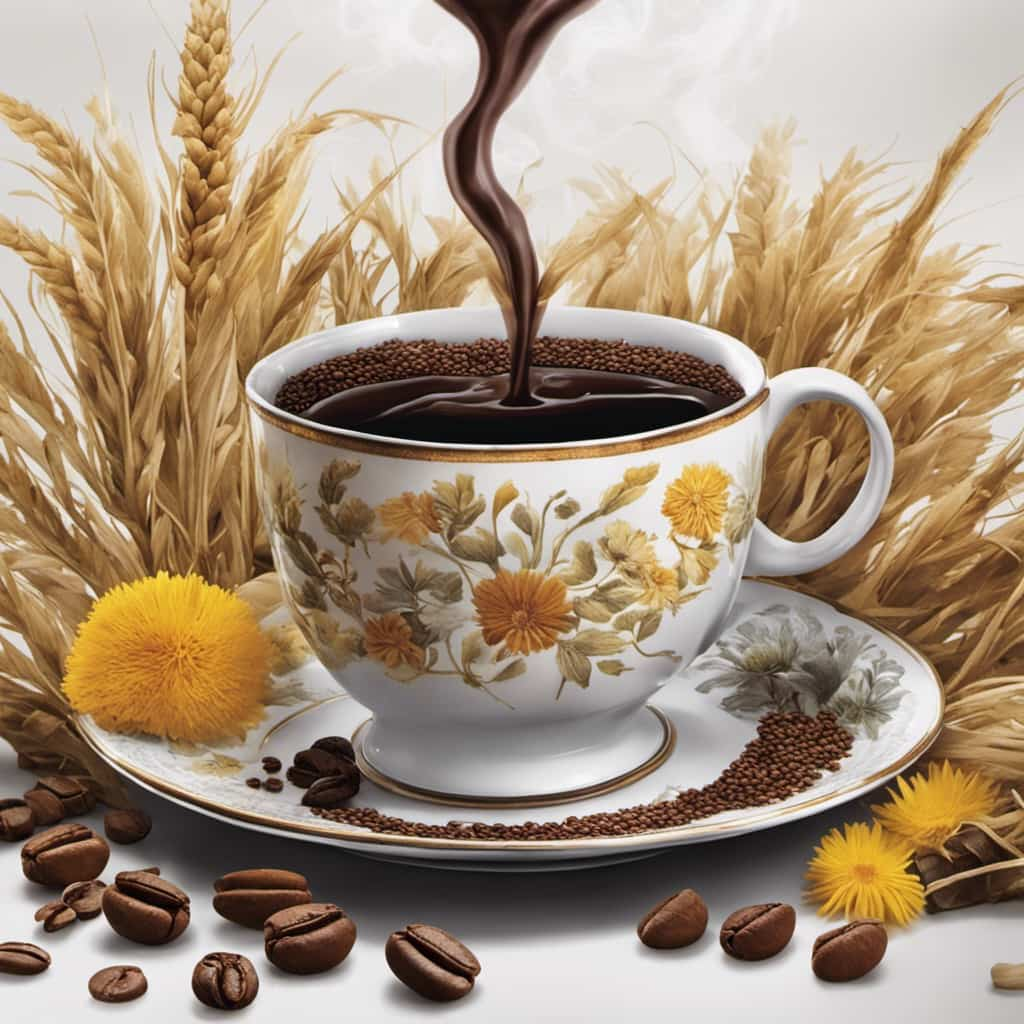
Can I Use Instant Coffee in a Coffee Maker?
Sure, we can definitely use instant coffee in a coffee maker. The pros include convenience and speed, while the cons may be a compromise in taste and quality. It’s a trade-off, but it works.
How Long Does It Take for a Coffee Maker to Brew a Full Pot of Coffee?
The brewing time of a coffee maker can vary depending on several factors. These factors include the type of coffee maker, the size of the pot, the desired strength of the coffee, and the brewing method used.
Can I Use Tea Leaves Instead of Coffee Grounds in a Coffee Maker?
Using tea bags instead of coffee grounds in a coffee maker has pros and cons. The pros include convenience and variety, while the cons include potential flavor contamination and residue buildup.
Is It Possible to Make Iced Coffee Using a Coffee Maker?
Yes, it is possible to make iced coffee using a coffee maker. There are various iced coffee recipes and alternative brewing methods that can be used to achieve a refreshing and delicious cold coffee drink.

Conclusion
In conclusion, understanding how a coffee maker works involves grasping the intricacies of its basic components, water heating and dispensing mechanism, brewing process, extraction of coffee, and the importance of filters.
By comprehending the role of grind size, one can further enhance the flavor and quality of their brewed coffee.
Just as the saying goes, ‘A well-oiled machine,’ a coffee maker operates with precision and efficiency, ensuring a delightful cup of joe every time.
Justin is a seasoned author, coffee and tea enthusiast, and an essential member of the Cappuccino Oracle team. With a keen appreciation for the complexities of coffee, coffee alternatives, and tea, Justin has dedicated his professional career to exploring these realms and sharing his insights with readers worldwide.
Justin’s immersion in the world of coffee, coffee alternatives, and tea began at a young age, kindling a passion that extended beyond mere consumption. This love for these beverages led him to combine his talent for writing with his devotion to coffee and tea, bringing him to Cappuccino Oracle as a dedicated author.
Coffee Basics
How Can I Get Coffee Delivered

Do you find yourself frustrated with the long queues at the coffee shop every morning?
Well, we’ve got some exciting news for you! We’ve discovered a variety of convenient ways to have coffee delivered right to your doorstep.
From local coffee shop delivery services to online subscriptions and grocery store options, there’s a delivery method to suit every coffee lover’s needs.
Get ready to say goodbye to long queues and hello to the delightful aroma of freshly brewed coffee at home.
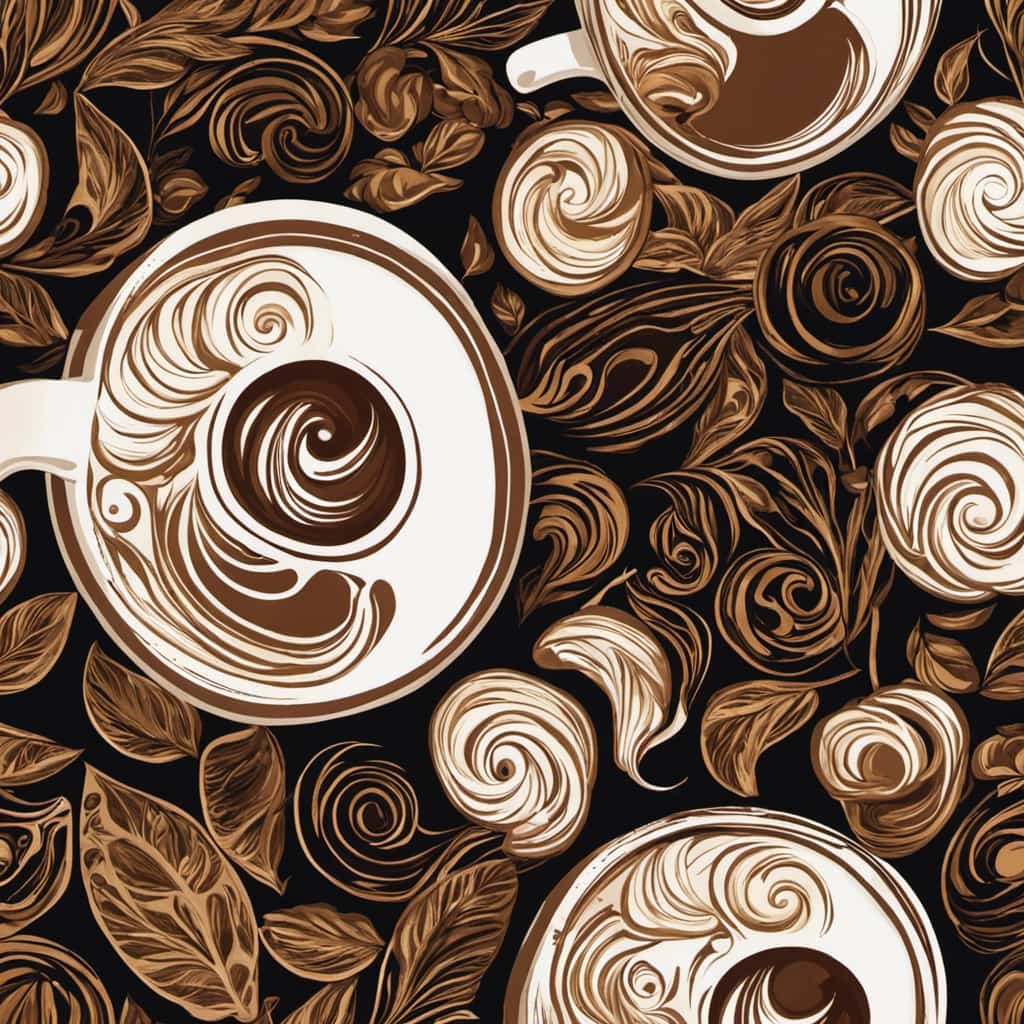
Key Takeaways
- Local coffee shops offer convenient delivery services through coffee delivery apps.
- Online coffee subscription services provide customizable options for coffee delivery.
- Grocery stores offer online ordering and delivery services for coffee.
- Food delivery apps offer a wide range of coffee delivery options from various coffee shops.
Local Coffee Shop Delivery Services
Our favorite local coffee shop, Joe’s Cafe, offers a convenient delivery service for all coffee lovers in the area. With the rise of coffee delivery apps, it has become easier than ever to enjoy your favorite brew from the comfort of your own home or office.
Joe’s Cafe has partnered with these apps to bring their delicious coffee straight to your doorstep. The pricing for their coffee delivery service is reasonable and competitive, ensuring that you can enjoy a fresh cup of joe without breaking the bank.
Whether you prefer a classic latte or a bold espresso, Joe’s Cafe has you covered. Simply download the app, browse their menu, place your order, and sit back as your coffee is delivered right to you.
It’s never been easier to satisfy your caffeine cravings.

Online Coffee Subscription Services
We love exploring different coffee options, and one convenient way to do that’s through online coffee subscription services. These services offer a variety of online coffee delivery options, allowing you to have your favorite beans or blends delivered right to your doorstep.
One of the benefits of coffee subscription services is the convenience they offer. You can choose the type of coffee you want, the frequency of delivery, and even customize your order based on your preferences. Additionally, many subscription services work directly with coffee roasters, ensuring that you receive fresh and high-quality coffee every time.
With online coffee subscription services, you can easily discover new flavors and expand your coffee palate without leaving your home.
Now, let’s move on to explore grocery store delivery options.
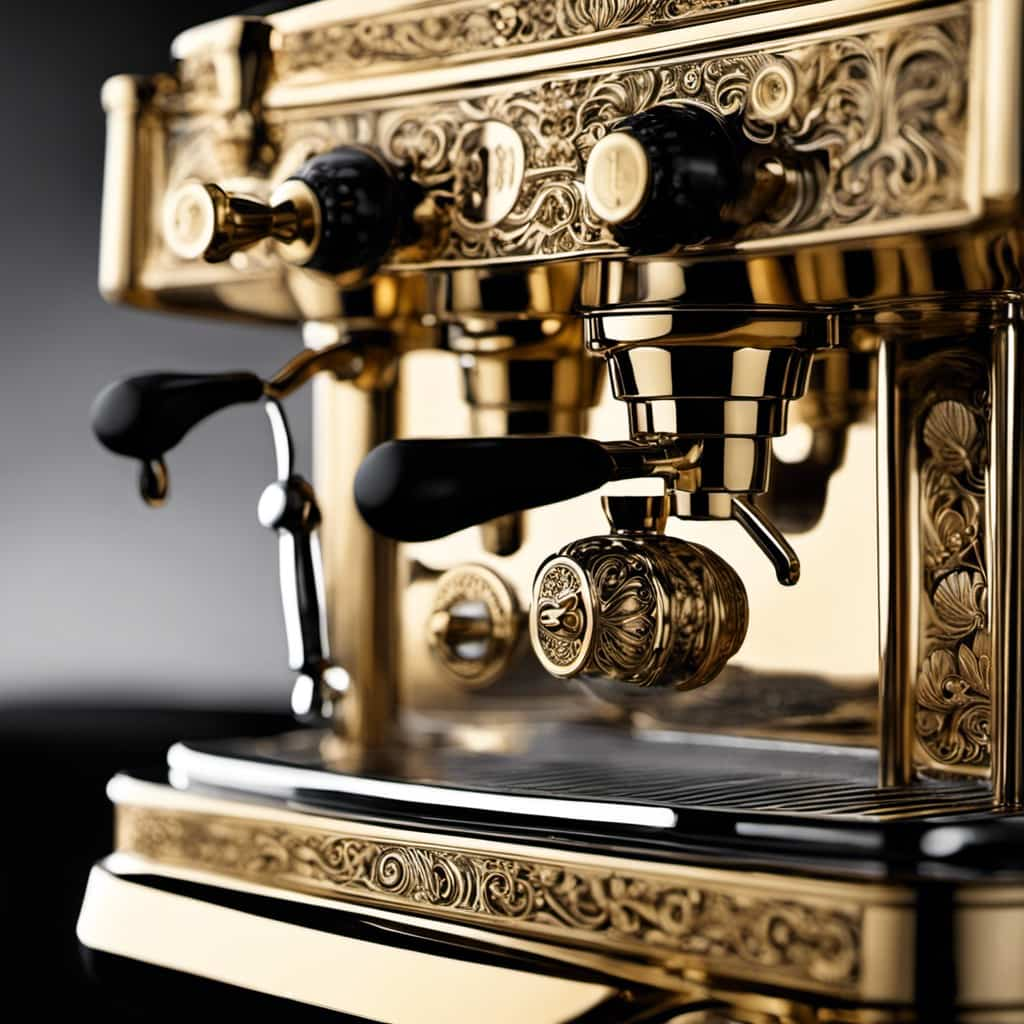
Grocery Store Delivery Options
Sometimes, grocery stores offer coffee delivery services that allow us to conveniently have our favorite beans or blends delivered right to our doorstep. Here are three grocery store delivery options to consider:
- Online Ordering: Many grocery stores now have websites or mobile apps where you can browse their coffee selection, place an order, and schedule a delivery. This option provides the convenience of shopping from the comfort of your home.
- Meal Kit Delivery: Some grocery stores offer meal kit delivery services that include coffee as part of their packages. These meal kits are designed to provide you with all the ingredients needed to cook a specific meal, and they often include coffee as a beverage option.
- Convenience Store Delivery: In addition to traditional grocery stores, some convenience stores now offer delivery services. These stores typically have a limited selection of coffee options, but they can be a convenient option for those who need their coffee fix quickly.
With these grocery store delivery options, you can easily get your favorite coffee delivered to your doorstep without having to leave the comfort of your home.
Food Delivery Apps That Offer Coffee
Continuing from the previous subtopic, we can explore the convenience of ordering coffee through food delivery apps.
These apps provide a wide range of coffee delivery options, allowing you to enjoy your favorite brew from the comfort of your home or office. Whether you prefer a classic cup of black coffee or a fancy espresso-based drink, these apps have got you covered.
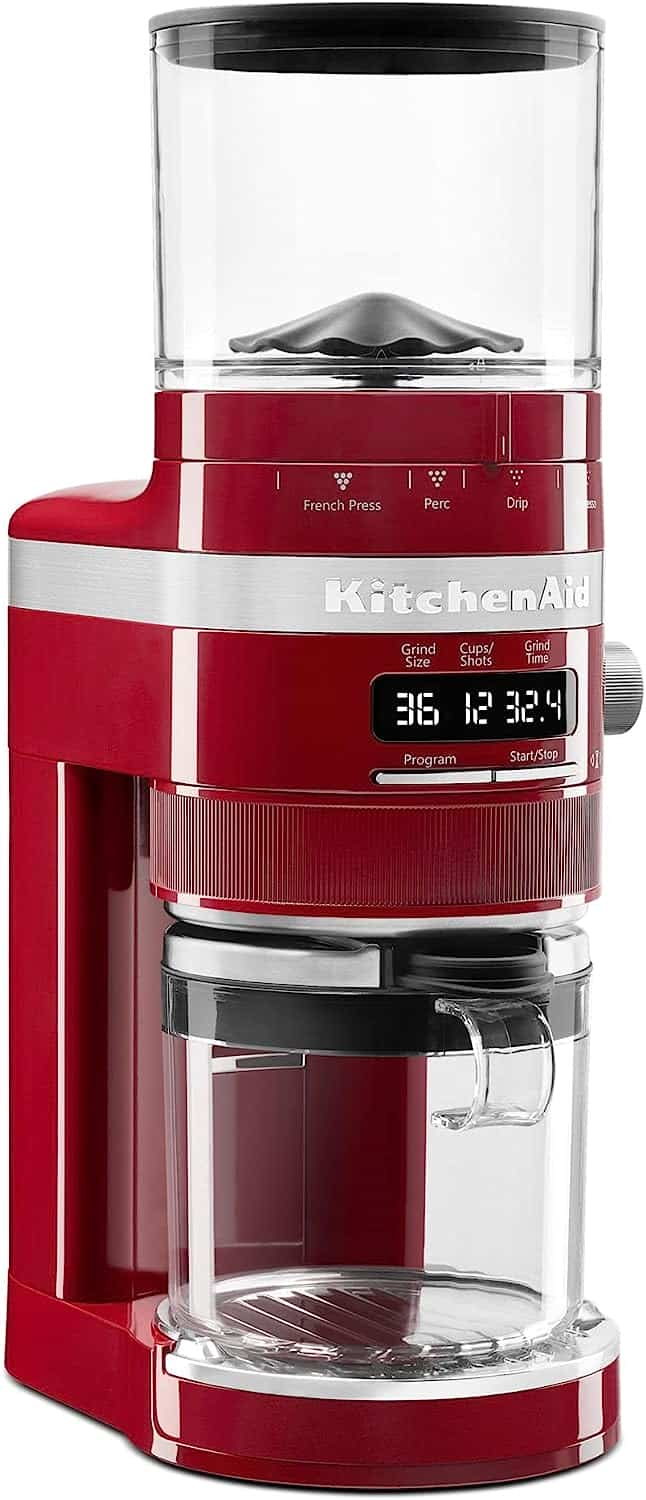
With just a few taps on your smartphone, you can browse through various coffee shops and choose your desired blend. However, it’s important to note that some food delivery apps may charge additional coffee delivery fees. Therefore, it’s advisable to check the app’s fee structure before placing your order.
Now, let’s move on to the next section where we’ll discuss specialty coffee roasters with nationwide shipping.
Specialty Coffee Roasters With Nationwide Shipping
Many specialty coffee roasters offer nationwide shipping for their unique blends.
Here are three specialty coffee roasters that prioritize direct trade coffee sourcing and single origin coffee beans:

- Blue Bottle Coffee: Blue Bottle Coffee is known for its commitment to sourcing high-quality, single origin coffee beans. They have a variety of blends and single origin options available for delivery nationwide. Their coffee is sourced through direct trade relationships, ensuring fair wages and sustainable practices.
- Intelligentsia Coffee: Intelligentsia Coffee is dedicated to sourcing single origin coffee beans directly from farmers around the world. They have an extensive selection of coffee beans, including limited edition releases and seasonal offerings. Their nationwide shipping allows coffee lovers to enjoy their unique blends no matter where they are.
- Stumptown Coffee Roasters: Stumptown Coffee Roasters sources their coffee through direct trade relationships with farmers. They offer a wide range of single origin and blended coffee options, all roasted to perfection. With nationwide shipping, customers can experience the exceptional taste of Stumptown coffee from the comfort of their homes.
These specialty coffee roasters provide coffee enthusiasts with the convenience of nationwide shipping while maintaining a focus on direct trade coffee sourcing and single origin coffee beans.
Frequently Asked Questions
Can I Customize My Coffee Order With Specific Flavors or Milk Options?
Yes, you can customize your coffee order with specific flavors or milk options. Our menu offers a variety of options for customized coffee flavors and milk preferences to satisfy your unique taste preferences.
Are There Any Discounts or Loyalty Programs Available for Regular Coffee Delivery Customers?
There are discount options and customer rewards available for regular coffee delivery customers. We offer a variety of discounts and loyalty programs to ensure that our customers feel appreciated and receive the best value for their coffee deliveries.
How Do I Ensure That My Coffee Will Be Delivered at the Right Temperature for Optimal Taste?
To ensure optimal taste, we recommend following best practices for storing coffee beans and using reputable coffee delivery services. This guarantees that your coffee will be delivered at the right temperature for a satisfying cup every time.
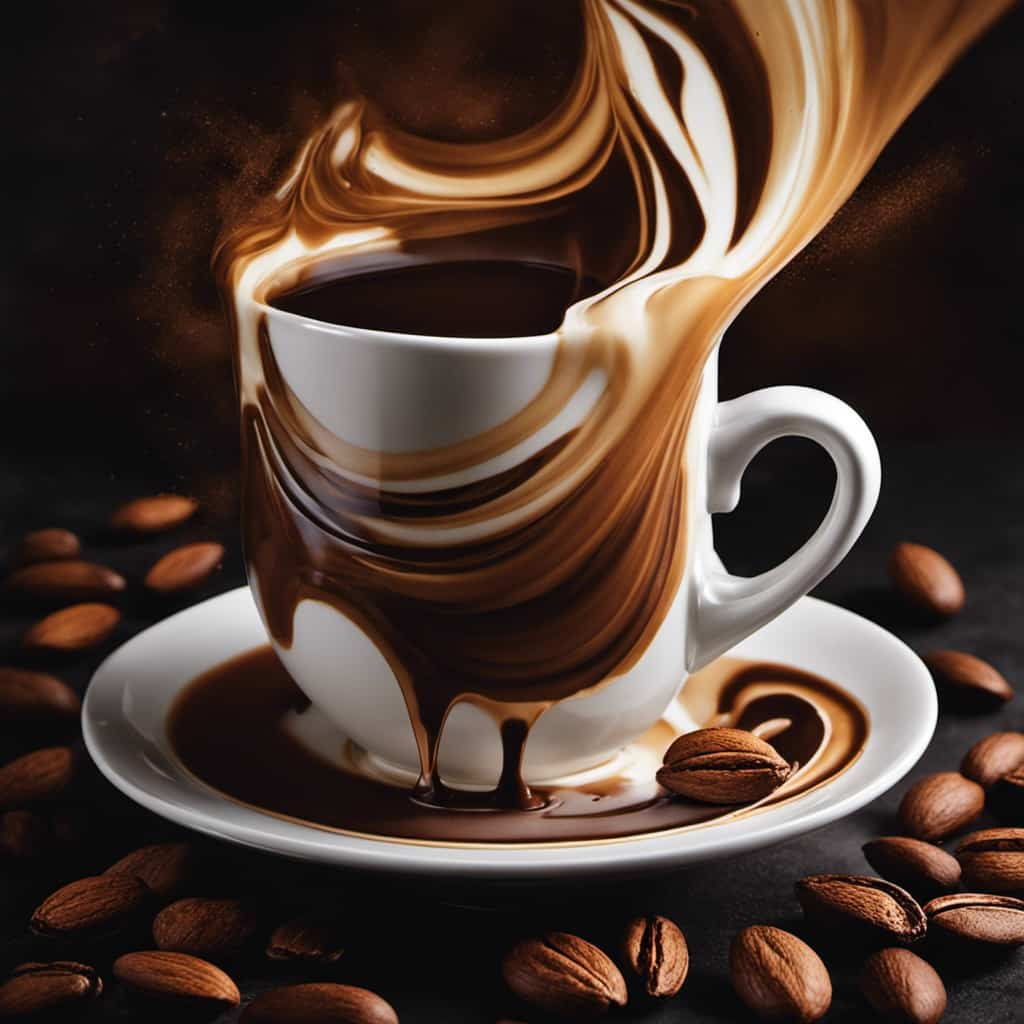
Can I Schedule Recurring Coffee Deliveries to Ensure I Never Run Out of My Favorite Brew?
To ensure scheduling convenience and never run out of our favorite brew, we can set up recurring coffee deliveries. This way, we can enjoy the taste of our preferred coffee without worrying about alternative options.
Are There Any Environmentally-Friendly Packaging Options Available for Coffee Delivery?
When it comes to coffee delivery, we prioritize sustainability. Rest assured, our service offers a range of eco-friendly options for packaging. We strive to minimize our environmental impact while delivering your favorite brew.
Conclusion
In conclusion, whether you’re craving a cup of joe in the comfort of your own home or need a caffeine fix delivered to your office, there are plenty of options available to get coffee delivered right to your doorstep.
From local coffee shops and online subscription services to grocery stores and food delivery apps, you can easily satisfy your coffee cravings without leaving your house.
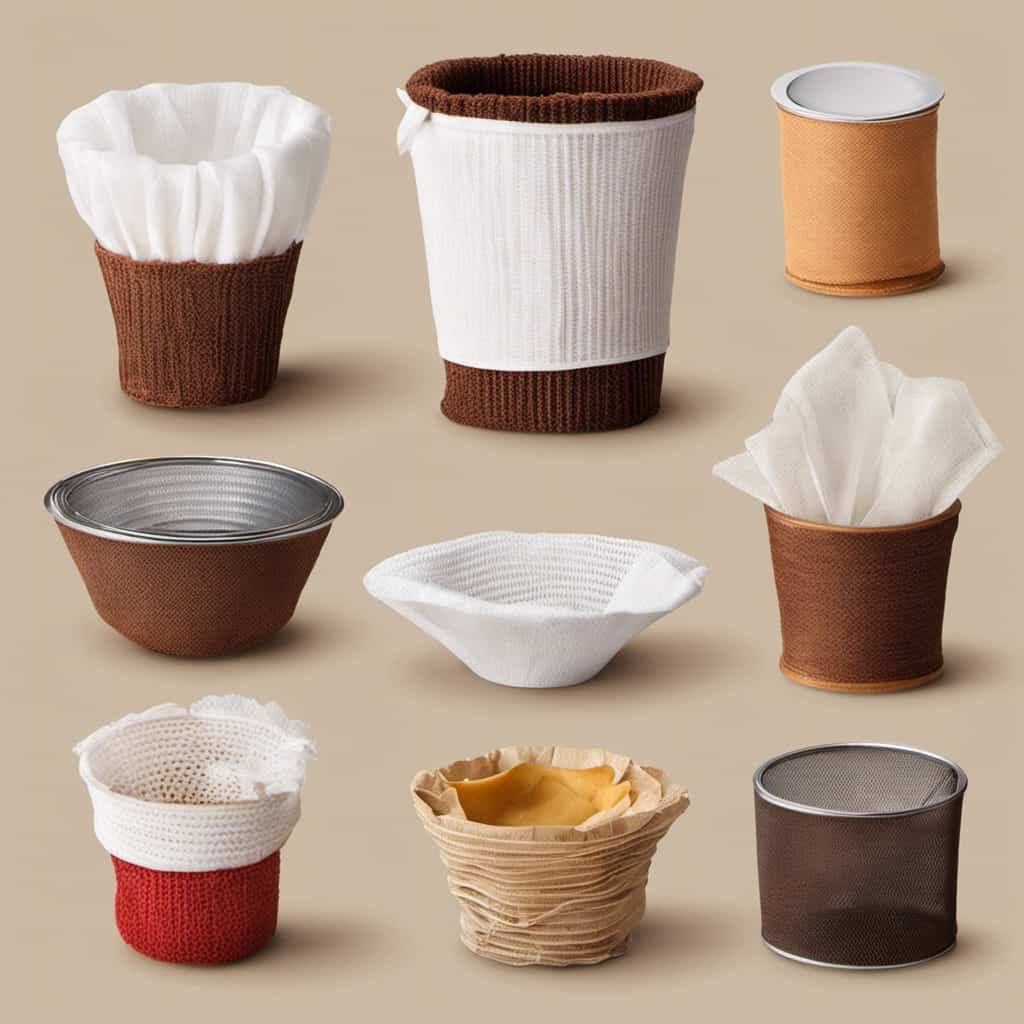
So why wait? Treat yourself to a piping hot brew and let the coffee come to you.
Justin is a seasoned author, coffee and tea enthusiast, and an essential member of the Cappuccino Oracle team. With a keen appreciation for the complexities of coffee, coffee alternatives, and tea, Justin has dedicated his professional career to exploring these realms and sharing his insights with readers worldwide.
Justin’s immersion in the world of coffee, coffee alternatives, and tea began at a young age, kindling a passion that extended beyond mere consumption. This love for these beverages led him to combine his talent for writing with his devotion to coffee and tea, bringing him to Cappuccino Oracle as a dedicated author.
Coffee Basics
Does Vanilla Bean Have Coffee

The enticing aroma of vanilla fills the air, tantalizing our senses and sparking intrigue. Exploring the realm of vanilla beans leads us on a quest to dispel a widespread misunderstanding.
Does this beloved flavor contain hints of coffee? Join us as we explore the origins, flavor profile, and chemical composition of vanilla bean.
Together, we’ll uncover the truth and settle the age-old question: does vanilla bean have coffee?
Key Takeaways
- Vanilla bean is derived from the orchid Vanilla planifolia, while coffee comes from the Coffea plant.
- Vanilla bean has its own distinct flavor profile, characterized by sweet and floral notes, while coffee has a rich and bold taste with hints of bitterness.
- Vanilla bean does not contain any coffee, and the misconception that it does is false.
- Vanilla bean is commonly used in baking and cooking to add a rich, sweet flavor to dishes, and it offers health benefits due to its antioxidant content.
The Origins of Vanilla Bean
Vanilla bean originates from the orchid Vanilla planifolia. This tropical orchid is native to Mexico and Central America. Vanilla bean cultivation requires specific growing conditions, including warm temperatures, high humidity, and well-drained soil. The plant typically grows as a vine, with long green stems that can reach up to 30 feet in length.

The vanilla bean itself is the fruit of the orchid, which is harvested when it reaches maturity. Historically, vanilla bean has been used for a variety of purposes. The ancient Mayans and Aztecs used it as a flavoring for their chocolate beverages, while Europeans later discovered its aromatic qualities and began using it in baking and cooking.
Today, vanilla bean continues to be a popular ingredient in a wide range of culinary creations, from desserts to beverages.
The Flavor Profile of Vanilla Bean
Why does vanilla bean have such a distinct and sought-after flavor?
The flavor profile of vanilla bean is characterized by its rich, sweet, and creamy taste. However, it’s the aroma of vanilla bean that truly sets it apart.
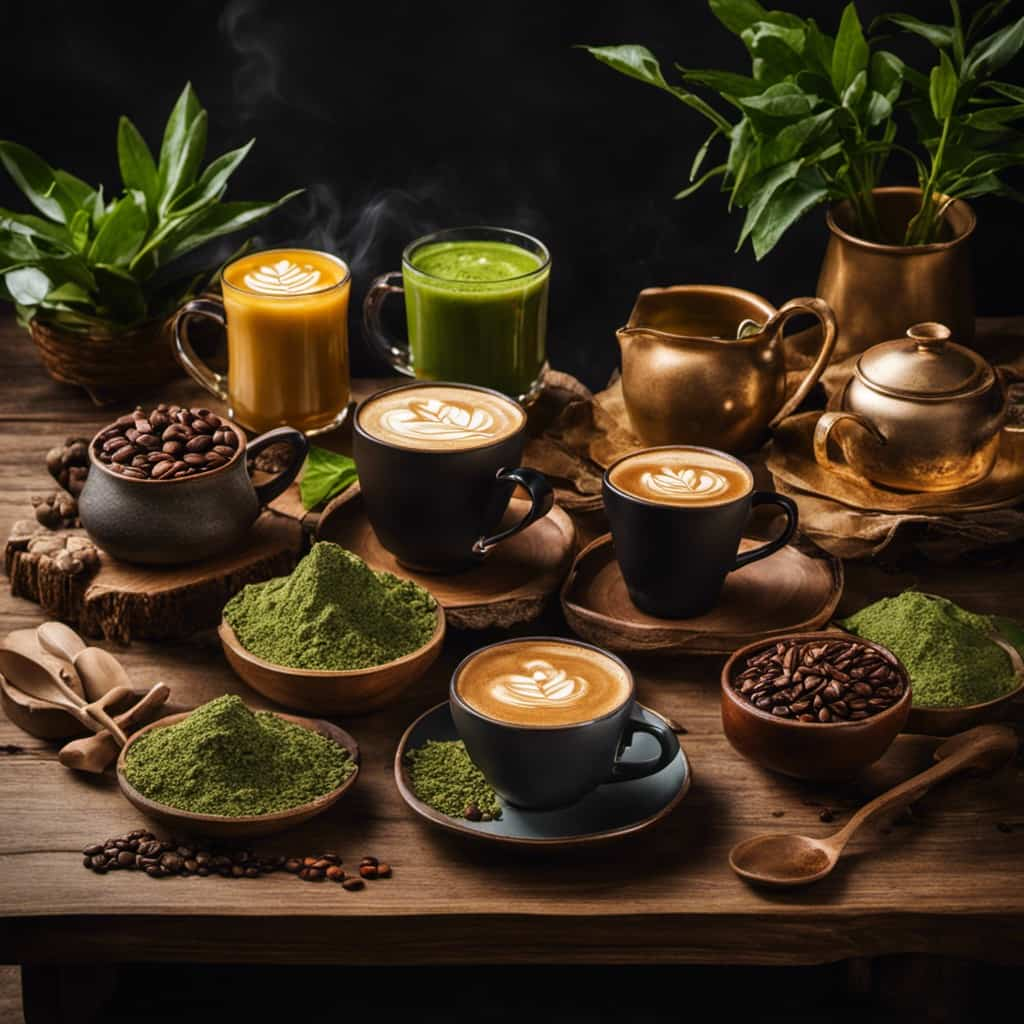
The beans emit a warm and inviting scent that’s often described as floral, with hints of caramel and chocolate. This unique fragrance adds depth and complexity to dishes, making it a popular ingredient in both sweet and savory recipes.
Vanilla bean is commonly used in baking, where its sweet and aromatic qualities enhance the flavors of cakes, cookies, and custards. It’s also used in beverages, such as coffee and cocktails, to provide a subtle and alluring aroma.
With its versatile and exquisite flavor profile, vanilla bean continues to be a staple in culinary creations.
The Common Misconception About Coffee in Vanilla Bean
Continuing our exploration of vanilla bean’s flavor profile, it’s important to address a common misconception about the presence of coffee in vanilla bean. Contrary to popular belief, vanilla bean doesn’t contain any coffee. This is one of the common myths surrounding vanilla bean that has been perpetuated over the years.

To clarify any confusion, here are some key points to consider:
- Vanilla bean is derived from the orchid plant, while coffee comes from the beans of the Coffea plant.
- Vanilla bean has its own distinct flavor profile, characterized by its sweet and floral notes.
- Coffee, on the other hand, has a rich and bold taste with hints of bitterness.
- While both vanilla and coffee are often used together in various recipes, they’re separate ingredients with unique properties.
It is important to debunk these misconceptions to ensure accurate information is shared about vanilla bean and its health benefits.
The Chemical Composition of Vanilla Bean
To understand the chemical composition of vanilla bean, we need to examine its unique blend of compounds. Vanilla bean contains a variety of compounds that contribute to its distinct flavor and aroma. One of the key compounds found in vanilla bean is vanillin, which is responsible for its sweet and creamy taste. Other compounds present in vanilla bean include eugenol, which gives it a subtle spicy note, and coumarin, which adds a hint of bitterness.
The extraction methods of vanilla bean involve soaking the beans in alcohol to release these compounds. In addition to its delicious taste, consuming vanilla bean has been associated with several health benefits. It’s rich in antioxidants, which can help protect against oxidative stress and inflammation. Furthermore, vanilla bean has been found to have potential anti-cancer properties.
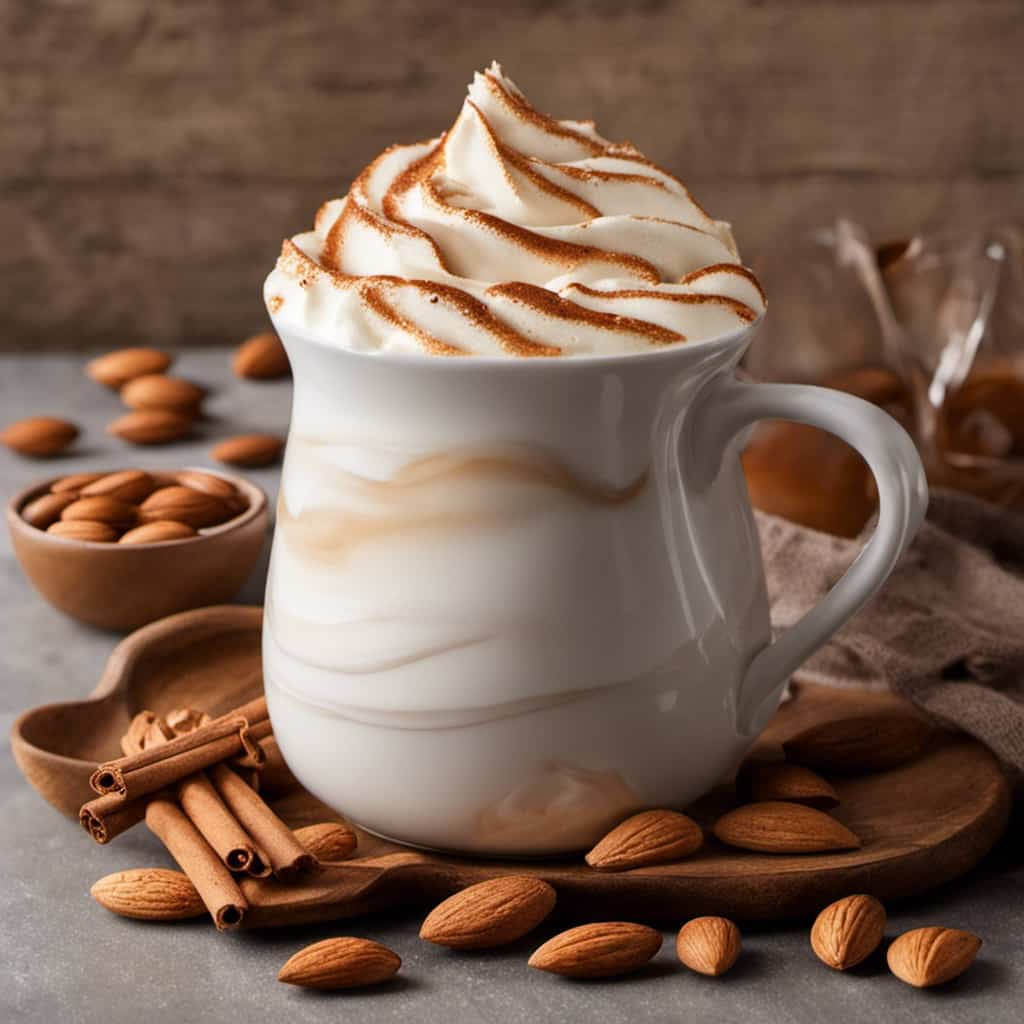
With its unique chemical composition and health benefits, vanilla bean is truly a remarkable ingredient. Now let’s move on to the next section to find out the verdict: does vanilla bean have coffee?
The Verdict: Does Vanilla Bean Have Coffee?
Now let’s determine whether or not vanilla bean contains coffee. Vanilla bean doesn’t contain coffee. It’s derived from the fruit of the vanilla orchid, and its flavor comes from the compounds found in the bean itself.
Here are some key points to consider about vanilla bean:
- Vanilla bean is commonly used in baking and cooking to add a rich, sweet flavor to dishes.
- It’s often used in desserts such as cakes, cookies, and ice cream.
- Vanilla bean has a natural fragrance and can enhance the aroma of baked goods.
- In addition to its taste and smell, vanilla bean also offers some health benefits. It contains antioxidants that can help reduce inflammation and improve heart health.
Frequently Asked Questions
How Is Vanilla Bean Grown and Harvested?
Vanilla bean farming techniques involve careful cultivation and harvesting. The process requires specific temperature and humidity conditions to ensure optimal growth. We use traditional methods to produce high-quality vanilla beans for various culinary purposes.
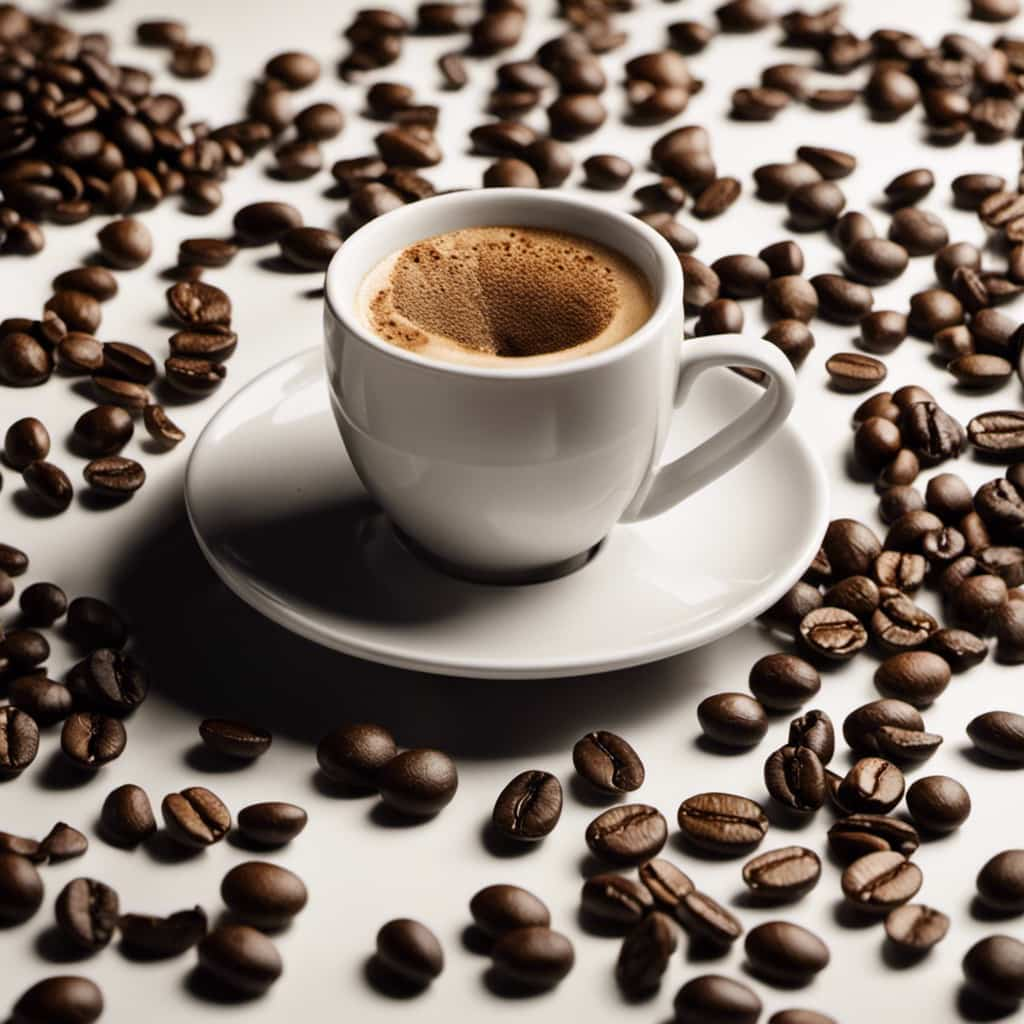
What Are the Different Types of Vanilla Bean Available in the Market?
Different flavors of vanilla bean are available in the market, each with its own unique taste and aroma. From Madagascar to Tahitian, these varieties can enhance a wide range of desserts and baked goods. Discover the best recipes using vanilla bean.
Can Vanilla Bean Be Used as a Substitute for Coffee?
Vanilla bean is a versatile flavoring agent that can be used in baking. It adds a rich, sweet taste to desserts and beverages. However, it does not contain coffee and cannot be used as a substitute for it.
Are There Any Health Benefits Associated With Consuming Vanilla Bean?
Vanilla bean is a versatile ingredient that can enhance the flavor of various recipes. Additionally, it is known for its potential health benefits and is commonly used in skincare products.
How Should Vanilla Bean Be Stored to Maintain Its Freshness and Flavor?
Storing techniques and preserving methods are important to maintain the freshness and flavor of vanilla bean. Proper storage in an airtight container, away from heat and light, will help preserve its quality for longer periods.
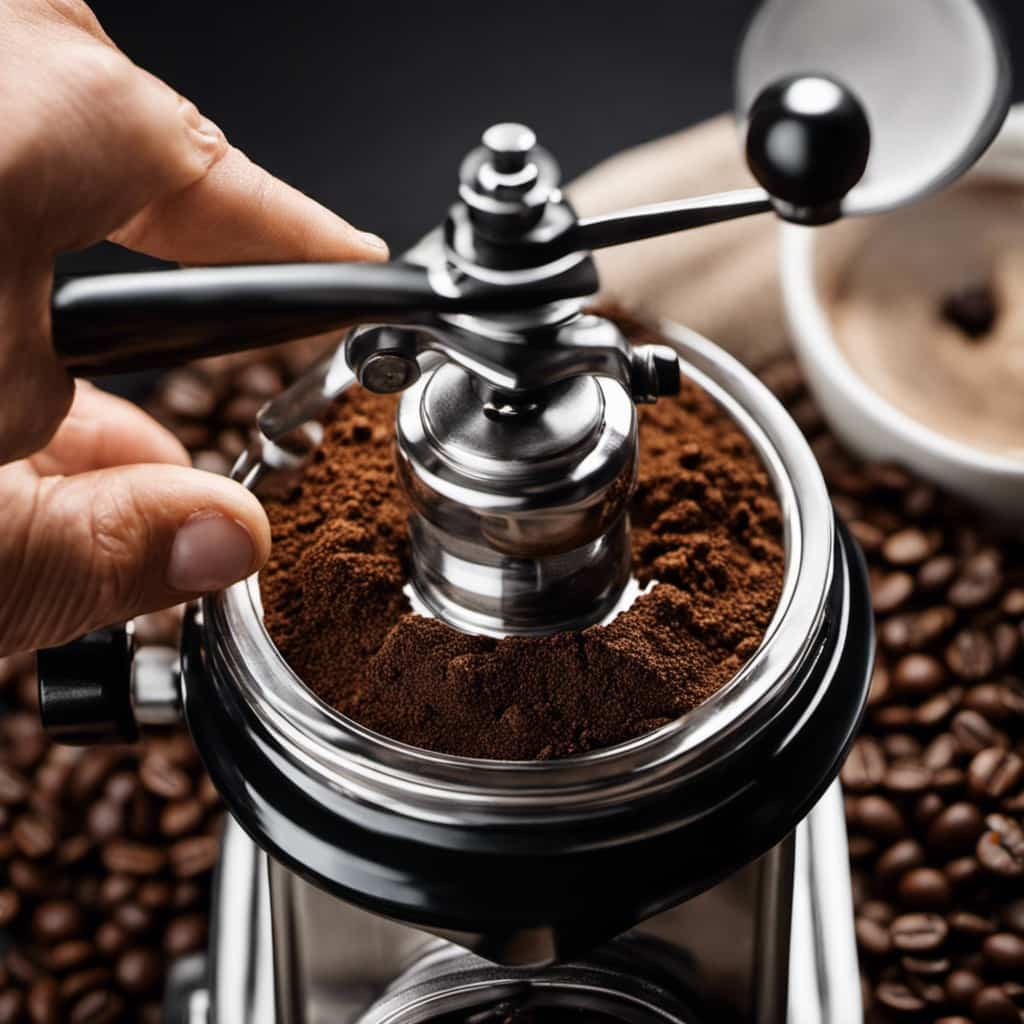
Conclusion
In conclusion, vanilla bean doesn’t have coffee. While both vanilla and coffee have distinct flavors and aromas, they come from different sources.
Vanilla bean is derived from the orchid plant, while coffee beans are the seeds of the coffee plant. Although they can be paired together in various culinary creations, vanilla and coffee are separate entities when it comes to their composition.
So next time you enjoy the rich and smooth taste of vanilla, remember that it’s all about the beans, but without the coffee.
Justin is a seasoned author, coffee and tea enthusiast, and an essential member of the Cappuccino Oracle team. With a keen appreciation for the complexities of coffee, coffee alternatives, and tea, Justin has dedicated his professional career to exploring these realms and sharing his insights with readers worldwide.
Justin’s immersion in the world of coffee, coffee alternatives, and tea began at a young age, kindling a passion that extended beyond mere consumption. This love for these beverages led him to combine his talent for writing with his devotion to coffee and tea, bringing him to Cappuccino Oracle as a dedicated author.
-

 Coffee Basics5 days ago
Coffee Basics5 days agoThe Ultimate Guide To Buying Nespresso Pods: Where And How?
-

 Coffee Basics1 week ago
Coffee Basics1 week ago11 Best Medium Roast Coffees For Your Perfect Cup
-

 Coffee Basics1 week ago
Coffee Basics1 week agoStarbucks Venti Drinks: Customization And Pricing Guide
-

 Coffee Basics4 days ago
Coffee Basics4 days agoPerfect Your Espresso With Puck Screens: A Barista’s Secret
-

 Cappuccino Oracle Selected Reviews2 days ago
Cappuccino Oracle Selected Reviews2 days agoSmeg Knife Block Review Review [2024]
-

 Coffee Basics7 days ago
Coffee Basics7 days agoWhat Is Half-Caff Coffee? (And How Much Caffeine Is In It?)
-

 Coffee Basics7 days ago
Coffee Basics7 days ago9 Best Ground Coffee Brands For Your Perfect Cup
-

 Coffee Basics16 hours ago
Coffee Basics16 hours agoCan I Drink Coffee After Botox















